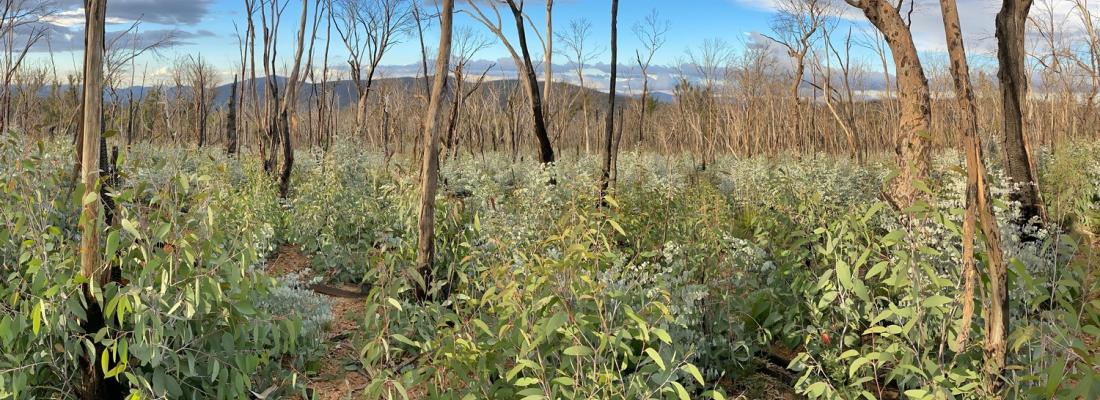Climate change and risks Reading time 2 min
Extreme fire events: how Australia’s forests are rising from the ashes
Published on 01 September 2022

The past few years have been greatly troubled by drought and high temperatures across the world. The 2019-2020 fire season saw these harsh conditions bring massive forest fires to south-eastern Australia where the temperate forest has very high biomass values. In this period, 4 million hectares were burned, representing 20% of Australia’s forests.
For these forests that were burned from the ground to the canopy, images from the SMOS satellite provided the evidence to calculate pre- and post-fire biomass, telling a story of rapid vegetation recovery. By late 2020, less than a year after the fires, grasses, shrubs and burned-but-not-dead eucalyptus trees were already growing back. But how exactly were the carbon losses and gains involved in this rapid regrowth to be measured?
The solution lay in the introduction by INRAE’s researchers and their colleagues of two new parameters for their measurements:
- loss of vegetation cover and above-ground biomass in Australia’s forest areas (due to the concurrent effects of drought, high temperatures and fire in 2019);
- post-fire vegetation recovery one year later, aided by above-average precipitation in 2020 (particularly in the forest regions of south-eastern Australia).
To complement the satellite images, the researchers then deployed the full array of carbon-storage analysis techniques and predictive models in their armoury. This enabled them to assess the changes in the structure and function of the vegetation through precise indices such as forest leaf area and above-ground biomass.
The captured images show large losses in biomass in 2019 caused by the fires, drought and high temperatures. Forested areas lost the equivalent of 200 million tonnes of carbon, representing 15% of above-ground biomass. Of the 200 million tonnes of carbon lost, 90 million were due to the fires, and 100 million to the cumulative effects of drought and extreme temperatures.
Rainfall in 2020 was double that of 2019. This led to large biomass gains in the fire-hit forests, with a total of over 260 million tonnes of carbon stored in 2020. Of this, 220 million tonnes were gained in the fire-affected areas, and just 40 million in non-affected areas.
Numerous species of eucalyptus known for their post-fire resilience and resistance to drought dominate Australia’s forests. The above-average rainfall in 2020 favoured the strong and rapid regrowth of trees and understory vegetation (grass, shrubs) during March-April and August-December 2020, leading to complete recovery of the lost carbon stocks by the beginning of 2021.
Reference
Yuanwei Qin, Xiangming Xiao, Jean-Pierre Wigneron, Philippe Ciais, Josep G. Canadell, Martin Brandt, Xiaojun Li, Lei Fan, Xiaocui Wu, Hao Tang, Ralph Dubayah, Russell Doughty, Sean Crowell, Bo Zheng, Berrien Moore, Large loss and rapid recovery of vegetation cover and aboveground biomass over forest areas in Australia during 2019–2020, Remote Sensing of Environment, Volume 278, 2022, 113087, ISSN 0034-4257, https://doi.org/10.1016/j.rse.2022.113087.
